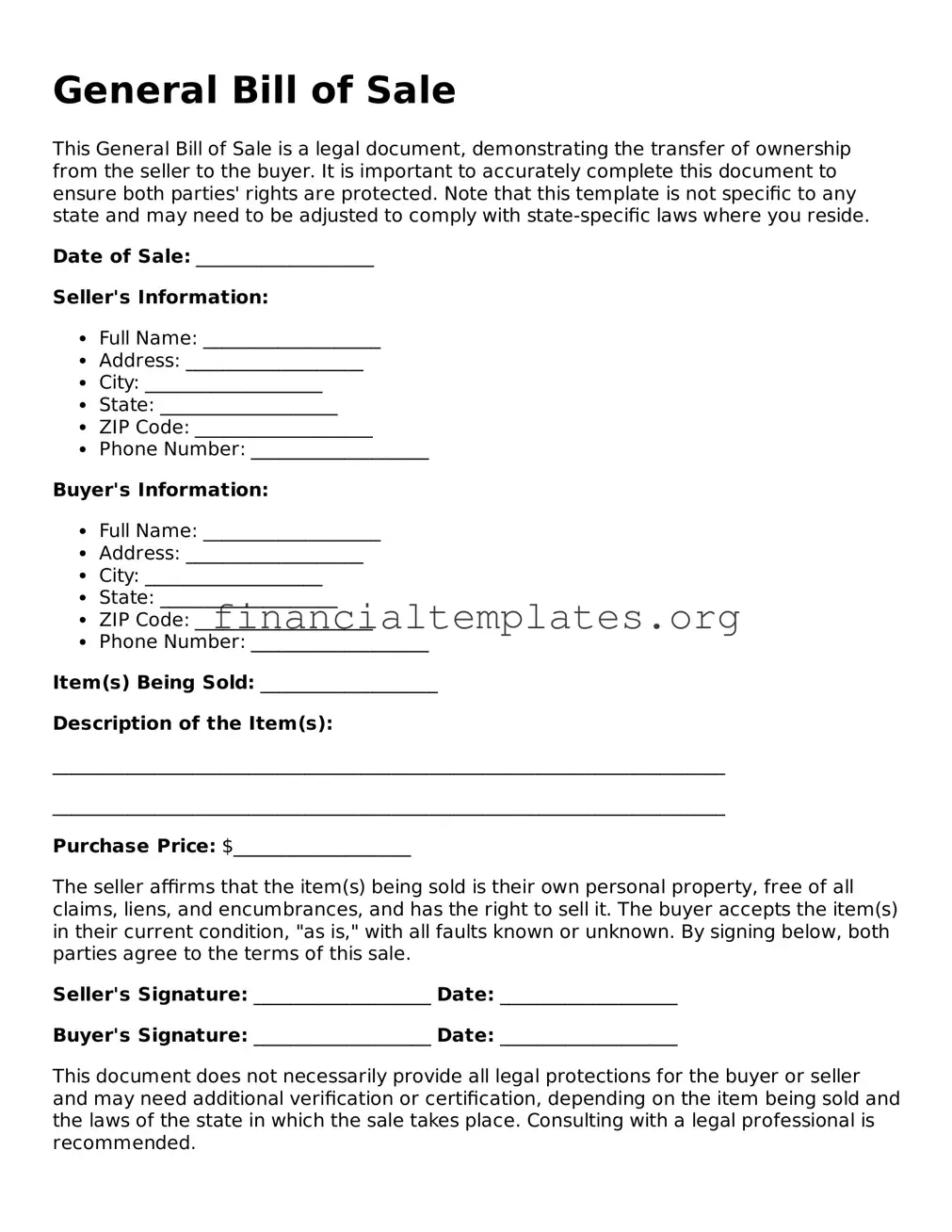The Vehicle Bill of Sale is closely related to the General Bill of Sale; both serve the function of recording the sale of personal property. The key distinction lies in the specificity of the Vehicle Bill of Sale, which is tailored for transactions involving vehicles. This document often requires details specific to vehicles, such as make, model, year, and VIN (Vehicle Identification Number), alongside the basic information about the seller, buyer, and the sale found in a General Bill of Sale.
Another document similar to the General Bill of Sale is the Equipment Bill of Sale. Designed specifically for transactions involving tools or machinery, this form includes details about the equipment, such as the make, model, and condition. Like the General Bill of Sale, it establishes proof of the transfer of ownership from the seller to the buyer and includes information about both parties and the terms of the sale.
The Boat Bill of Sale shares similarities with the General Bill of Sale, focusing on transactions involving boats. It goes beyond the general format by demanding specific information about the boat, such as the length, type, make, year, and Hull Identification Number (HIN). This document also outlines the terms of the sale, the parties involved, and serves as a legal record of the transaction.
The Firearm Bill of Sale is akin to the General Bill of Sale but caters to the sale of firearms. It requires detailed information about the firearm, including make, model, caliber, and serial number, in addition to the standard particulars about the buyer, seller, and sale conditions. This document is significant for legal compliance and ensuring the lawful transfer of firearms.
Similar to the General Bill of Sale, the Business Bill of Sale is used during the sale of a business, capturing the transaction's specifics. This document typically contains detailed information about the business being sold, including assets, liabilities, and operating conditions, alongside the standard fields regarding the buyer, seller, and terms of the sale.
The Animal Bill of Sale is another variant, specifically for transactions involving animals. This document ensures that details such as breed, age, health, and other pertinent information are clearly stated. While retaining the key elements of a General Bill of Sale, it also caters to the unique requirements of transferring animal ownership.
Lastly, the Real Estate Bill of Sale parallels the General Bill of Sale in purpose but is used for the sale of real property. While a General Bill of Sale suffices for personal property, real estate transactions require this specific document to note the property details, buyer, seller, and the terms. It serves as proof of the transfer of ownership of real estate and is crucial for the legal recording of the transaction.
